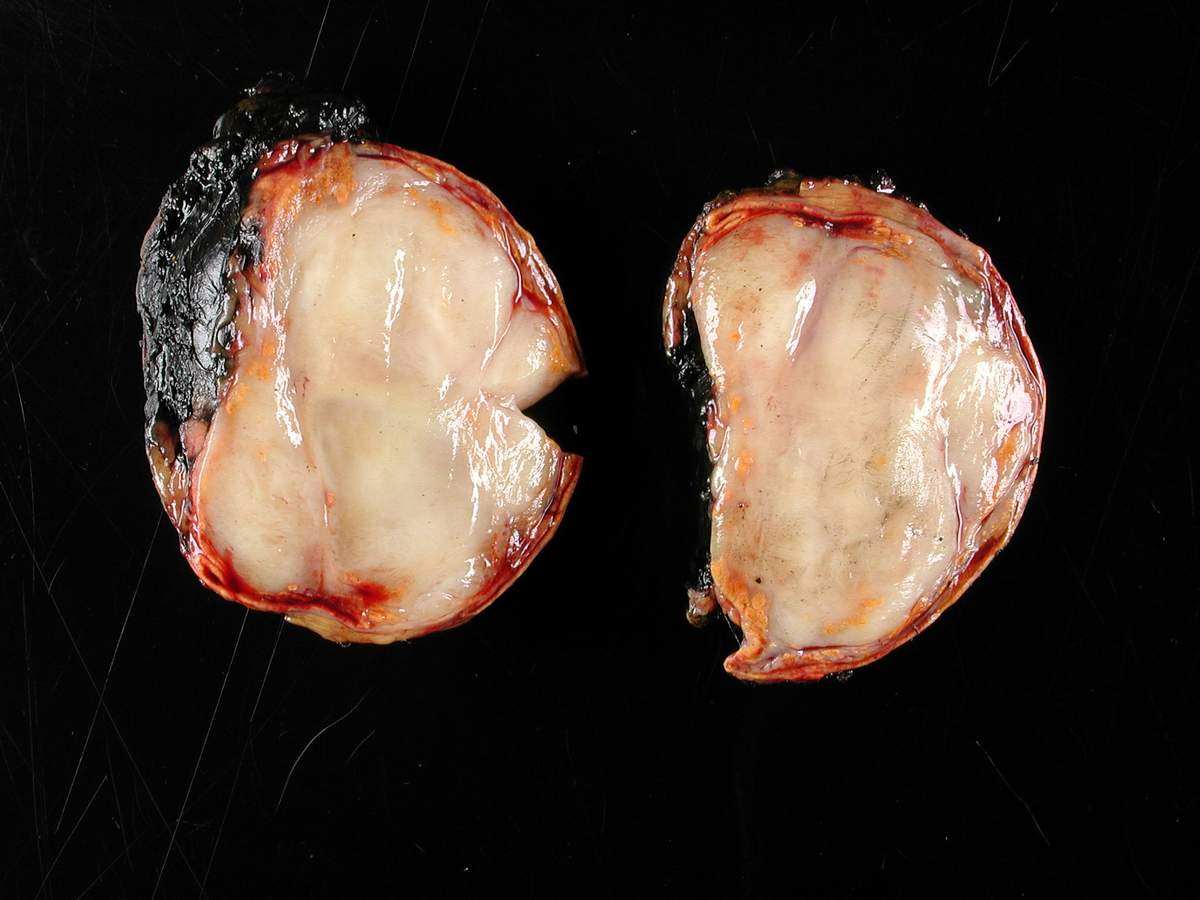Ganglioneuroma pathophysiology
|
Ganglioneuroma Microchapters |
|
Diagnosis |
|---|
|
Treatment |
|
Case Studies |
|
Ganglioneuroma pathophysiology On the Web |
|
American Roentgen Ray Society Images of Ganglioneuroma pathophysiology |
|
Risk calculators and risk factors for Ganglioneuroma pathophysiology |
Editor-In-Chief: C. Michael Gibson, M.S., M.D. [1]Associate Editor(s)-in-Chief: Sujit Routray, M.D. [2]
Overview
Ganglioneuromas are derived from the primordial neural crest cells, which are undifferentiated cells of the sympathetic nervous system. Genes involved in the pathogenesis of ganglioneuroma include MYCN oncogene and chromosome 1p36. On gross pathology, ganglioneuromas are characterized by solid, white, firm, well-circumscribed, and nodular tumors. On microscopic histopathological analysis, ganglioneuromas are characterized by spindle-shaped cells with cell borders in a fibrillar matrix containing ganglion cells with large round nuclei, prominent nucleoli, and abundant eosinophilic cytoplasm.[1]
Pathophysiology
Pathogenesis
- Ganglioneuromas are derived from the primordial neural crest cells, which are undifferentiated cells of the sympathetic nervous system.
- They are composed of ganglion cells, schwann cells, and fibrous tissue.[2]
- They do not contain neuroblasts, intermediate cells, or mitotic figures.
Genetics
Development of ganglioneuroma is the result of multiple genetic mutations. Genes involved in the pathogenesis of ganglioneuroma include MYCN oncogene and chromosome 1p36.
Associated Conditions
Ganglioneuromas may be associated with:[2]
- Multiple endocrine neoplasia type IIb (mucosal ganglioneuromas)
- Turner syndrome
- Neurofibromatosis type 1
Gross Pathology
- On gross pathology, ganglioneuromas are characterized by solid, white, firm, well-circumscribed, and nodular tumors.
- Gangliocytoma is commonly located in the following regions:[2]
- Posterior paraspinal mediastinum (most common)
- Adrenal gland
- Paraspinal retroperitoneum
- Neck
Microscopic Pathology
- On microscopic histopathological analysis, ganglioneuromas are characterized by spindle-shaped cells with cell borders in a fibrillar matrix containing ganglion cells with large round nuclei, prominent nucleoli, and abundant eosinophilic cytoplasm. No atypia or mitotic activity is evident. The ganglion cells stain positive for S-100 protein.[1]
- Ganglioneuromas are well differentiated neuronal tumors that do not contain immature elements.
Videos
{{#ev:youtube|IWng6E9flDA}}
References
- ↑ 1.0 1.1 Vasiliadis K, Papavasiliou C, Fachiridis D, Pervana S, Michaelides M, Kiranou M; et al. (2012). "Retroperitoneal extra-adrenal ganglioneuroma involving the infrahepatic inferior vena cava, celiac axis and superior mesenteric artery: A case report". Int J Surg Case Rep. 3 (11): 541–3. doi:10.1016/j.ijscr.2012.07.008. PMC 3437388. PMID 22907039.
- ↑ 2.0 2.1 2.2 Pathology of ganglioneuroma. Dr Bruno Di Muzio and Dr Yuranga Weerakkody et al. Radiopaedia 2015. http://radiopaedia.org/articles/ganglioneuroma
